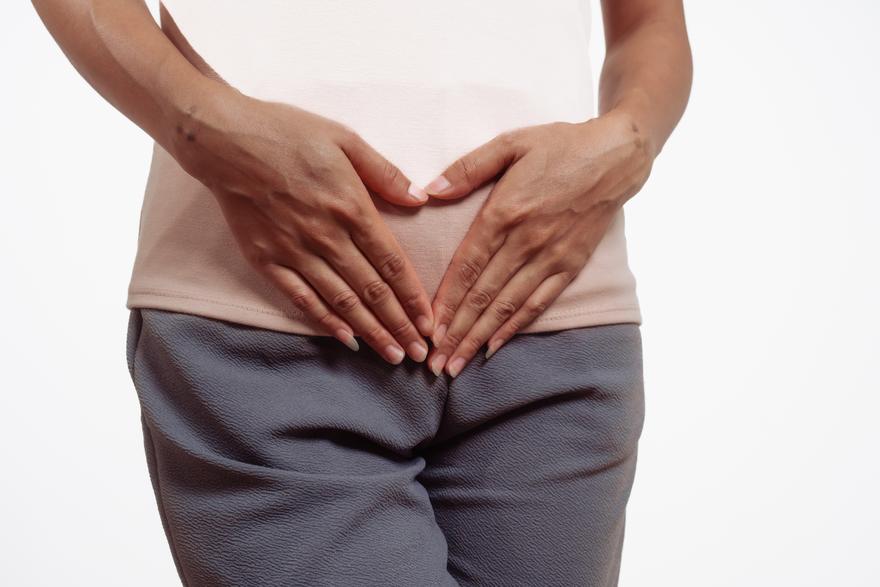
Fibroids After 40: 5 Myths, 5 Truths, and 5 Things You Can Do Now — From a Fitness Coach Who Gets It
Why I’m Talking About Fibroids This Month
I suffered with fibroids for years and, truthfully, I kept it mostly to myself. I only ever mentioned it to a small circle of friends—and here’s the thing: nearly every single one of them had experienced fibroids themselves or had them in the past.
This month, I had another blog topic all lined up for the Strengthify Her newsletter—until yesterday, when Lindsey Davis, whom many of us know from ABC News and Good Morning America, revealed publicly that she also suffers from fibroids.
While I don’t wish fibroids on any woman, I was encouraged to see her speak so openly about it. This condition affects an estimated 80% of women by age 50, and African American women are impacted at nearly three times the rate of other groups1.
So, in my own small way of supporting her openness and continuing the conversation, I decided to dedicate this month’s blog to fibroids—how they affect women in midlife, the myths that keep us from taking action, and some practical, fitness-friendly steps we can take right now to support our health.
5 Myths About Fibroids (and the Fitness Truth Behind Them)
Myth #1: Fibroids only happen to older women.
It’s true that fibroids often become more noticeable in our 40s and early 50s, but they can appear at any time during your reproductive years. They may stay small and symptom-free for years, or they can grow and cause changes in bleeding, energy, and comfort. In perimenopause, hormonal fluctuations can encourage fibroid growth or make existing ones more symptomatic, which is why many women first notice them during midlife.2
Myth #2: Exercise will make fibroids worse.
This one usually starts from personal experience: a woman notices more pelvic pressure, cramping, or heavy bleeding after certain workouts—especially high-impact ones like running, plyometrics, or intense abdominal exercises during her period. It’s easy to connect the dots and assume all exercise is harmful for fibroids.
In reality, exercise itself doesn’t cause fibroids to grow or worsen. In fact, consistent moderate activity supports hormone regulation, reduces inflammation, and improves blood flow—factors that can help manage fibroid symptoms. 3 The key is matching your workout type and intensity to your body’s current needs—for example, swapping high-impact training for low-impact cardio on heavy bleeding days, or focusing on mobility and recovery when pelvic discomfort is high.

Myth #3: If I have fibroids, I should avoid strength training.
I’ve seen this one pop up in online groups and heard it from women who were told—often by well-meaning friends—that lifting weights could “strain” their abdominal or pelvic area and make symptoms worse. There’s also a common misconception that because fibroids are in the uterus, engaging the core during lifting is risky.
Here’s the truth: there is no medical evidence that resistance training worsens fibroids. In fact, strength training is one of the most powerful tools for women in midlife—it supports bone density, muscle mass, metabolic health, and mood (per the CDC Guidelines). It is important to focus on form, load, and breath control--and working with a certified personal trainer can help you determine the proper load, form and breathing techniques for your body and training goals. For example, you might choose to do goblet squats instead of heavy back squats, or adjust core exercises to reduce intra-abdominal pressure during certain times in your cycle. The goal isn’t about avoiding strength work—it’s about making it fibroid-friendly.
Myth #4: Surgery is the only solution.
While surgery is a valid and sometimes necessary option, it’s not the only one. Lifestyle interventions—like anti-inflammatory nutrition, consistent movement, stress management, and maintaining a healthy weight—can all play a role in managing symptoms and improving quality of life 4. These strategies don’t “cure” fibroids, but they can reduce their impact on your day-to-day life.
Myth #5: Fibroids always shrink after menopause.
Some do shrink when estrogen levels fall, but it’s not guaranteed. In some cases, fibroids stay the same size or symptoms persist even after menopause. 5 Waiting for menopause as your only strategy will likely leave you dealing with unnecessary discomfort for years.
5 Truths You Need to Know
Truth #1: Fibroids are hormone-sensitive.
Fibroids grow in response to estrogen and, to a lesser extent, progesterone. This means that during perimenopause—when hormones fluctuate more than ever—symptoms can appear for the first time or worsen. This is also why lifestyle habits that help regulate hormones, like regular exercise, balanced nutrition, and quality sleep, can play such an important role in management. You can’t control every hormonal shift, but you can influence how your body responds to them.
Truth #2: Movement is part of the solution—not the problem.
When symptoms flare, it’s tempting to cut out all exercise to “rest” your way to relief. But research and lived experience tell us that movement can help manage weight, improve circulation, reduce inflammation, and boost energy. It’s less about whether you move and more about how you move—matching intensity to your current energy and symptoms, and being willing to adjust week-to-week.
Truth #3: Your pelvic floor and core benefit from targeted attention.
Fibroids can put extra pressure on the pelvis, which in turn affects posture, stability, and even bladder control. That’s why pelvic floor awareness isn’t just for postpartum women—it’s for anyone experiencing pressure, heaviness, or weakness in the core region. Gentle core activation exercises, like diaphragmatic breathing, pelvic tilts, and modified planks, can help you feel more supported during everyday activities and workouts.
Truth #4: Stress management isn’t optional.
High, prolonged stress can elevate cortisol levels, which may disrupt hormonal balance and indirectly influence fibroid symptoms. Stress also increases inflammation in the body, which can make discomfort worse. This is why recovery strategies—rest days, stretching, meditation, gentle walks—are as important as the workouts themselves. They’re not “extras” you do when you have time; they’re essential parts of your training plan.
Truth #5: Tracking your symptoms gives you power.
Keeping a simple log of your workouts, cycle, and fibroid-related symptoms can reveal patterns that you might not notice in day-to-day life. Maybe heavy lifting feels great mid-cycle but triggers discomfort in the days leading up to your period. Maybe long runs drain you during certain weeks but are fine in others. With this data, you can adjust your training intelligently—avoiding unnecessary frustration and keeping your fitness consistent.
5 Things You Can Do Now (Coach-Approved)
- Choose Low-Impact Cardio
Think of activities like walking, swimming, cycling, or using an elliptical trainer. These movements increase heart rate, improve circulation, and support cardiovascular health without putting extra downward pressure on the pelvis. You can make them more effective by varying intensity—try brisk walking with short intervals of faster pace, or gentle hill work for a strength boost. On heavy bleeding days, keep the pace comfortable and focus on simply moving your body. - Strength Train 2–3x Per Week
Strength training is non-negotiable for midlife women—it supports metabolism, muscle mass, bone density, and joint stability. For fibroid-friendly training, aim for compound moves like squats, deadlifts, rows, and presses, but adapt your stance, load, or range of motion to avoid aggravating symptoms. For example, during a week with high pelvic discomfort, you might swap barbell back squats for goblet squats or step-ups to reduce intra-abdominal pressure while still working your lower body. - Build in Recovery & Mobility Work
Recovery work helps your muscles, joints, and nervous system reset between training sessions. Stretching the hips, hamstrings, and lower back can relieve the pressure fibroids sometimes cause in the pelvic area. Mobility drills for the hips and thoracic spine can improve your range of motion for lifts, making workouts feel easier and more fluid. Recovery also means scheduling true rest days—days when the focus is on gentle movement, hydration, and stress reduction. - Stress management isn’t optional
Chronic psychological stress is linked with hormonal and inflammatory changes (HPA-axis disruption, elevated cortisol/epinephrine) that may increase fibroid risk or symptom burden. Large reviews note that stress biomarkers correlate with higher fibroid risk, and a meta-analysis found a statistically significant association between chronic stress and uterine fibroids—especially among Black women. While association ≠ causation, women with fibroids also report higher rates of depression/anxiety and lower quality of life, so building stress-reduction into your plan is both evidence-informed and practical. Aim for consistent recovery practices (sleep hygiene, walking, breath work, restorative yoga, social support) alongside your training.6,7,9,10
- Track Your Cycle & Plan Your Workouts
A training plan that works with your cycle is a game-changer. For example:
- Days 1–3 (heavy flow): Choose gentle activities—walking, stretching, or restorative yoga.
- Days 4–14 (energy high point): This is your window for higher-intensity strength work and cardio pushes.
- Days 15–28 (energy may dip): Scale intensity as needed, focusing on form, mobility, and recovery.
This approach helps you train consistently without burning out or aggravating symptoms during more sensitive days.8 However, not every woman is the same, so my best feedback here is to pay attention to your cyclical symptoms and follow your body's natural rhythm and need for movement during your cycle--only you know what you can and cannot handle.
Why This Matters for Midlife Fitness
Your 40s and 50s are not the time to give up on movement—they’re the time to make it work smarter for your body. Fibroids aren’t a barrier to strength, stamina, or energy. They’re just another factor to account for in your plan (notice the word, plan, as developing a regular fitness routine requires deliberate planning. Our fitness is not something that just happens sporadically). When you adapt your workouts to fit your symptoms, you can train consistently, avoid flare-ups, and keep progressing. The truth is, fibroids are FAR MORE common than we talk about, and they impact women in unique ways. By sharing stories like Lindsay Davis’s—and our own—we help remove the stigma and encourage more women to seek solutions, avoid shame and discomfort. You have options, and movement can be, and often is, a big part of feeling better.
Ready to Train Smarter with Fibroids in Mind?
I specialize in creating fitness plans for women--particularly those of us who are 35+--that align with your hormones, energy, and lifestyle—fibroids included. Let’s make movement work for you. Book a Consultation or explore my coaching programs today.
About Judithe
I'm Judithe, founder of Strengthify Her Wellness Coaching, a certified personal trainer, health coach, and menopause-informed wellness expert. My mission is to help women move beyond fatigue, frustration, and wellness overwhelm by building strength, energy, and confidence with a science-backed, hormone-friendly approach.
Sources:
- Women’s Health.gov – Uterine Fibroids
- Harvard Health – Fibroids: Not Just a Young Woman’s Problem
- Fibroid Expert – Lifestyle Modifications
- GLMI – Lifestyle Changes and Fibroid Management
- WebMD – Fibroids and Menopause
- PubMed
- BMJ Journal
- PubMed
- NIH – Hormones and Fibroid Growth
- Verywell Health – How to Shrink Fibroids
- EatingWell – Best and Worst Foods for Fibroids
- ReproductiveFacts.org


Comments